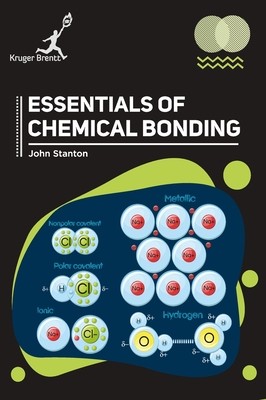
- We will send in 10–14 business days.
- Author: John Stanton
- Publisher: Kruger Brentt Publisher Uk. Ltd.
- ISBN-10: 1787152936
- ISBN-13: 9781787152939
- Format: 17.8 x 25.4 x 1.8 cm, kieti viršeliai
- Language: English
- SAVE -10% with code: EXTRA
Reviews
Description
Fundamental Concepts: Comprehensive coverage of fundamental concepts related to chemical bonding, including atomic structure, electron configuration, and the periodic table. Types of Chemical Bonds: Explanation of different types of chemical bonds, such as covalent bonds, ionic bonds, metallic bonds, and hydrogen bonds, including their formation, properties, and significance in chemical reactions. Molecular Structure and Geometry: Exploration of molecular structure and geometry, including the VSEPR theory (Valence Shell Electron Pair Repulsion), molecular orbital theory, and the relationship between molecular structure and chemical properties. Bonding Theories and Models: Discussion of various bonding theories and models, such as Lewis structures, valence bond theory, and molecular orbital theory, with examples and applications to illustrate their predictive power in explaining chemical behavior. Chemical Bonding in Practice: Application of chemical bonding principles to real-world scenarios, including examples from organic chemistry, inorganic chemistry, materials science, and biochemistry, demonstrating how an understanding of chemical bonding is essential for understanding and manipulating matter at the molecular level.
EXTRA 10 % discount with code: EXTRA
The promotion ends in 23d.03:38:57
The discount code is valid when purchasing from 10 €. Discounts do not stack.
- Author: John Stanton
- Publisher: Kruger Brentt Publisher Uk. Ltd.
- ISBN-10: 1787152936
- ISBN-13: 9781787152939
- Format: 17.8 x 25.4 x 1.8 cm, kieti viršeliai
- Language: English English
Fundamental Concepts: Comprehensive coverage of fundamental concepts related to chemical bonding, including atomic structure, electron configuration, and the periodic table. Types of Chemical Bonds: Explanation of different types of chemical bonds, such as covalent bonds, ionic bonds, metallic bonds, and hydrogen bonds, including their formation, properties, and significance in chemical reactions. Molecular Structure and Geometry: Exploration of molecular structure and geometry, including the VSEPR theory (Valence Shell Electron Pair Repulsion), molecular orbital theory, and the relationship between molecular structure and chemical properties. Bonding Theories and Models: Discussion of various bonding theories and models, such as Lewis structures, valence bond theory, and molecular orbital theory, with examples and applications to illustrate their predictive power in explaining chemical behavior. Chemical Bonding in Practice: Application of chemical bonding principles to real-world scenarios, including examples from organic chemistry, inorganic chemistry, materials science, and biochemistry, demonstrating how an understanding of chemical bonding is essential for understanding and manipulating matter at the molecular level.


Reviews